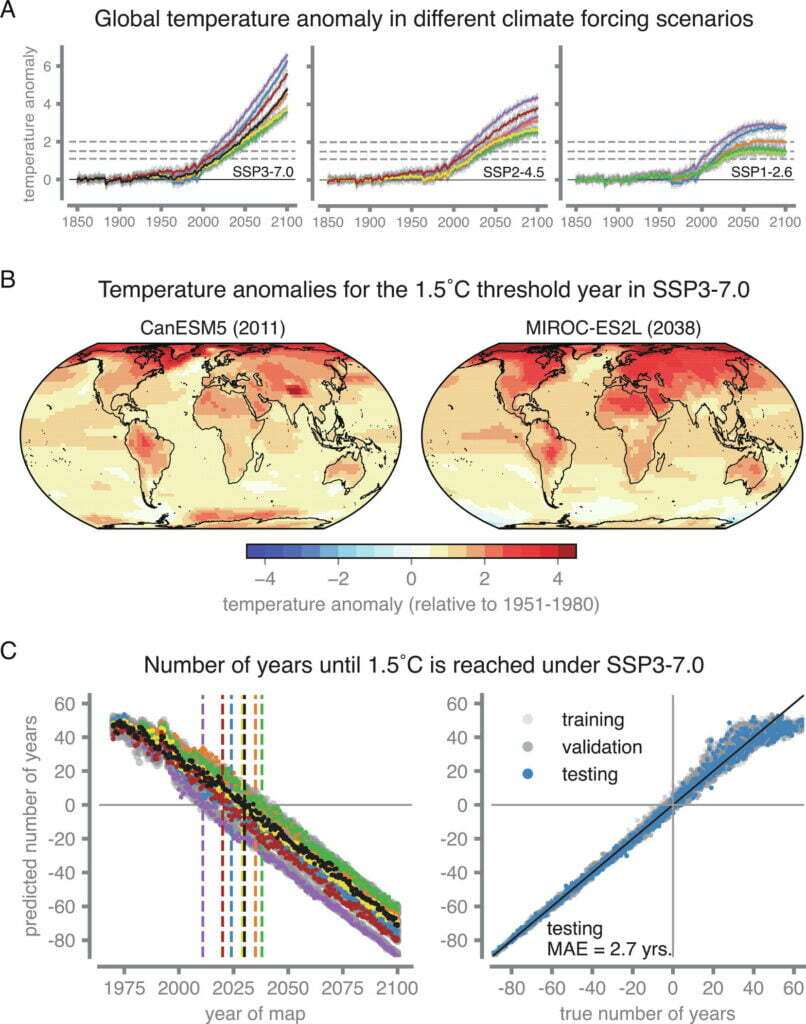Using a deep learning algorithm that can spot patterns in large volumes of data, researchers at Stanford University and Colorado State University analyzed a broad spectrum of simulations from global climate models. What came out of it is a staggering prediction about the temperatures of our planet.
If you want to read more about the study I link it here: I'll stay brief and bring you the gist of the speech. In summary, the model predicts that over the next 10 years temperatures are likely to rise by at least 1,5°C above industrial levels, with a 50% chance of an increase of more than 2 degrees (say even XNUMX°C ) before the 2050.
A disaster running amok
According to the team that worked on the study, there is solid evidence of the impact on numerous ecosystems of even just one degree Celsius of warming in global temperatures. Impact that accelerates other related changes, and this “is quite clear from our results” he says Noah Diffenbaugh, one of the researchers involved.
In fact, there is not much room for interpretation: the AI model (trained with historical data from 1980 to 2021) has estimated a 70% probability that we will exceed a 2°C increase between 2044 and 2065. If you consider that even the The impact of just one degree is disastrous, as mentioned, the scenario is very bad.

Temperatures up, you know the consequences
If the scenario estimated by researchers from Stanford and Colorado State is respected perfectly, the threats we are (unfortunately) getting used to will increase. Rising sea levels, crazy temperatures, increasingly intense heat waves, too little or too much rainfall, drought, habitat destruction, decrease in crops. Need anything else?
Fundamental global efforts to reduce emissions will not avert the serious scenario they intended to avert: the 1,5°C increase is a reality today, not tomorrow.
The threshold now moves to 2°C: and we absolutely have to stay within it.



Comments are closed.